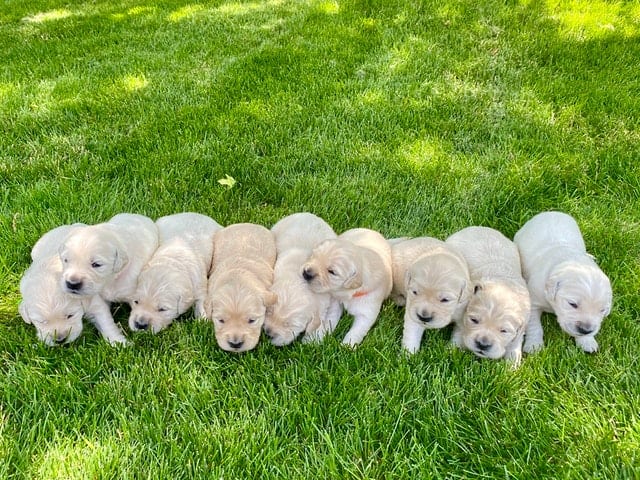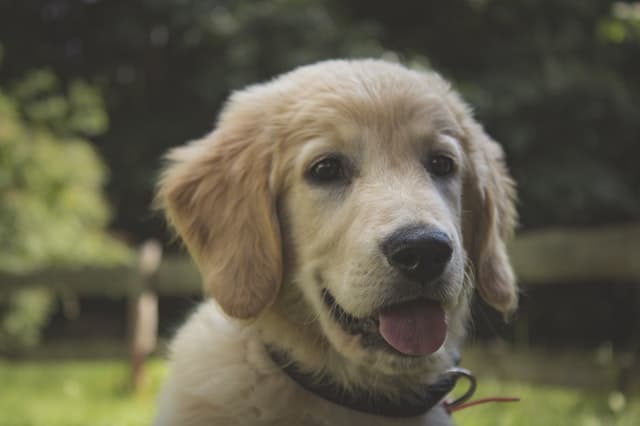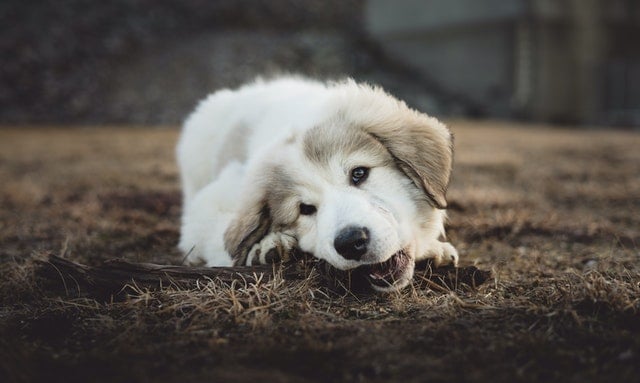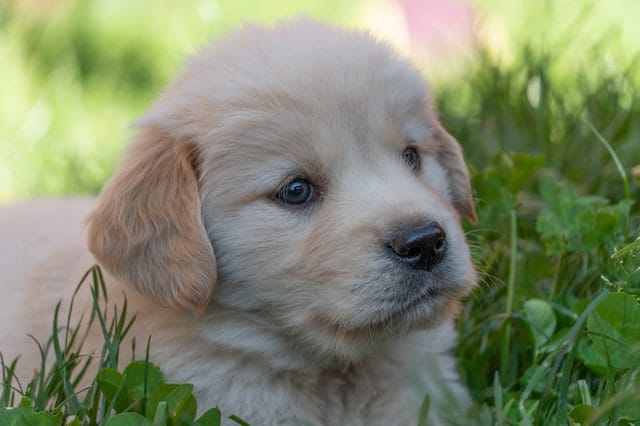If this is the first time you're getting one of these babies, you do not want to buy wrongly. If you don't know much about purebred golden retrievers and you go ahead and buy one anyway, you might later find yourself questioning your choice later. Golden retrievers are known for their positive temperaments, traits, and also playful nature. If you buy a purebred golden retriever pup, it will grow into these traits as it grows.
Contents
It is hard not to love a purebred golden retriever. They're affectionate, loyal, adaptable, love to play, easy to train, and are great family dogs. People of all ages adore them. Before going to a pet shop or breeder, you should be able to identify a pure breed golden retriever. Some of the reliable means of identification include:
Proper Documentation and pedigree

This is the most reliable method of identification. It shows that the pup has already been registered with a specific registry. Examples of such registries include American Club (AKC), Canadian Kennel Club, the United Kennel Club, and the Continental Kennel Club. Documentation indicates that the pup qualified for Documentation because its parents have been registered with the registries. AKC certified pedigree contains:
- The Dog's name and registration number.
- Colors and markings.
- Competition titles held by the pup’s ancestors.
- Any health-related information available.
As the owner, you should take the precaution of making a follow-up and registering your pup yourself. All you need to do is pay the fee and mail out a registration application. You can only claim full ownership of the pup after the breeder has handed over the papers to you.
The pedigree is like the pup's family tree and usually dates back to at least four generations and contains the registered names of its ancestors.
Although pedigrees are reliable, there are other ways to identify a pure breed golden retriever and adopt one of those lovelies for yourself, even if there are no papers. After all, the absence of paperwork doesn't make a pure breed golden retriever less so.
Appearance

While many retrievers can look alike, pure breed golden retrievers have features unique only to them and can't be found in other retrievers. They're usually muscular and considered symmetrical with a strong back and straight legs, with smooth, free gait.
Take their ears, for example; golden retrievers have short ears that can also fold over. Their ears are always located behind their eyes and just above the eyes. The tips fall over to the cheeks and can be pulled to cover their eyes.
Purebreed golden retrievers also have medium to large-sized eyes colored within the range of slightly brown to dark brown and dark rims. This feature makes golden retrievers look intelligent.
And don't forget the tail. Pure breed golden retrievers have thick tails that are muscular at the base, with the end of the tail slightly curved upwards. You won't find a golden retriever's tail completely curled it tucked between its legs. The length usually varies from 4 to 12inches.
Examine the coat

Another way to identify a golden retriever is through its coat. First, the coat must be dense and waterproof. Golden retrievers have a substantial amount of dense water repellent outer coat with a thick warm coat underneath. Their coats can either be wavy or straight. You should also note the color of their coat. Golden retrievers are a rich lustrous gold in different shades ranging from dark golden, light golden, cream golden, red golden, and white gold.
Golden retrievers also have feathering on their legs, tail, neck, and underbody and are lighter than the rest of the coat.
Temperament

Although in varying degrees, pure breed golden retrievers exhibit the same unique behavioral traits and characters. To confirm if the puppy is a golden retriever, you can check how active the pup is. Golden retrievers are very athletic and active; they need long hours of regular exercise before they can be satisfied, so rarely will you see a gentle golden retriever. Although, if they don't have things to be occupied with, they're often bored.
Also, golden retrievers are fiercely loyal to their owners and the people they spend the most time with. They're also adaptable as they can live in peace with other animals and are trustworthy, so they make great family pets. Try to look out for these qualities in the pup, as it'll help you identify if it's a pure breed golden retriever or not.
Price
Purebred golden retrievers are usually pricey than other dogs. Rarely will you get one below the $1000 mark? This reason for their expensive amounts is because of the extremely high demand for these dogs. If you're looking to adopt a purebred, you should be willing to spend a lot provably to get one.
The Different Purebred Golden Retriever Breeds

When buying a purebred golden retriever, you should be aware that there are three different types of the purebred golden retriever, namely the Canadian Golden Retriever, the American Golden Retriever, and the British Golden Retriever. However, the three breeds have similar temperaments, personalities, health, and quality of life. Each has distinct features that differentiate the three breeds, although the differences are negligible.
Canadian Golden Retrievers
Of the three breeds of the purebred golden retriever, this breed is most unique. The Canadian Golden retriever is usually taller than other breeds, it has an average of 2inches on them, and its hair is also shorter and slightly thinner. It is the most handsome of the three breeds.
American Golden Retrievers
This breed is slightly leaner than its counterparts. It is also not as strong as the other two breeds. Their fur coats are also darker, although they're the same height as the British breed. You can also identify the American breed with its eyes, the pupils if this breed is not fully rounded but rather slanty, forming a sort of triangular-shaped pupils. They've also colored a lighter shade of brown.
British Golden Retrievers
Also called English Golden Retrievers, their long, dense coat quickly identify them. Although they're pretty shorter than the Canadian breed, they're equally as strong. British golden retrievers have more powerful front legs and broader skulls than their counterparts, and their eyes are colored a darker shade of brown.
How To Care For A Purebred Golden Retriever

There's still work to do after buying a purebred golden retriever; you should get acquainted with the fact that golden retrievers have living needs that must be satisfied to have a happy, healthy pet. Golden retrievers do not like to be alone; these beautiful creatures cherish companionship more than anything. They love to be seen as a member of the family and treated as such. So its vital you learn how to socialize your puppy with other dogs and humans as well.
They're especially great in homes with kids as they are entirely comfortable with the noise, commotion, and non-stop activities children like to involve in. Besides, they are tolerant of other pets, so if you're a cat lover as well, you shouldn't worry about your two pets not getting along. Rabbits, other dogs, or pets are also safe with them. Also, they love playing a lot outdoors.
Feeding is essential to retrievers, although their owners should help manage their food intake as they tend to be overweight. Food should be measured and served twice daily, and you should give dog treats moderately. Exercising is also vital, and retrievers are supposed to exercise at least once daily. They have to let off a lot of steam through several activities, or else they direct their energies to unappealing behaviors like digging and chewing.
And if you are getting golden, be warned that they shed terribly, and you shouldn't be surprised to find fur even in the worst places. You can help reduce shedding by brushing them regularly. This way, you can detangle their fur and get rid of dead hair before it gets attached to available surfaces. Monthly baths are also recommended. Although, ensure your goldie is completely dry before brushing it.
You should have their nails trimmed regularly, about twice a month if you don't want them tearing into stuff. Their teeth should also be brushed periodically, about two to three times a week. Their ears fold over, creating an environment for organisms to grow, so ear care is vital. Watch out for signs of infections and clean their ears with cotton balls soaked in pH-balanced ear cleaner to reduce the risk of diseases.
Purebred golden retrievers are generally healthy and live for about 10-12 years. But when compared to other dogs, they risk having hip dysplasia and cancer. They are also at risk of other conditions like cataracts, hypothyroidism, allergies, and other diseases. Regular checks up should be done to keep them in perfect health.
Conclusion

Purebred golden retrievers are fine animals suitable as pets by people of all ages, and now that you know what to look out for when choosing one, you should adopt one of these puppies and get you a pet to love that loves you back.





Leave a Reply
You must be logged in to post a comment.